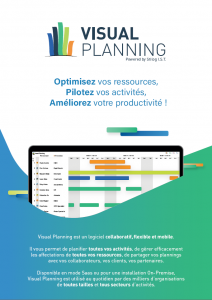According to a January 2021 PricewaterhouseCoopers survey, less than 20% of business leaders said they wanted to go back to the office norms set prior to the COVID-19 pandemic. Many business leaders saw the benefit of remote work options during the pandemic and want to keep those options open with hybrid workforces, and around 13% of executives said they were ready to eschew the office altogether.
Whether you’re looking to manage remote workforces, take a hybrid approach in the future or scale up with field service or other teams that don’t work all day in the office, you still have to manage your workforce. Below, you will find seven tips for managing remote or hybrid workforces in 2021 and beyond.
1. Set expectations and communicate them clearly.
Business goals and expectations are critical for any enterprise, but when managing remote or hybrid teams, they become a foundation upon which every action can be based. In a traditional work environment, leadership is present in the same location as workers. If team members don’t completely understand the overarching business goals and their place within that structure, it’s okay because leadership can shepherd them through processes and work to ensure things align at the end of the day.
In a remote environment, that’s not always the case. Employees may need to make on-the-fly decisions, including the best way to spend their time while working. By setting expectations and communicating them clearly, you empower your staff to make these decisions and help ensure everyone’s effort aligns.
Here are some tips for setting and communicating expectations in remote and hybrid environments:
- Start with defining your business goals.
- Break those goals into smaller versions for teams and individual people. What can each part of your business do to support your overall objectives?
- Make the goals specific and measurable. “Complete X tasks per day” or “Complete X project by June 1” are measurable goals.
- Communicate those responsibilities to each employee and let them take ownership of their tasks.
- Check in regularly to ensure employees are on track and see if they need additional resources or assistance.
2. Attend to technology needs and resources.
Technology was a major obstacle for many businesses in the early stages of the COVID-19 pandemic. Companies that didn’t normally work with hybrid or remote workforces realized that not everyone had access to reliable high-speed internet, computers or other technology required to do the job.
If you’re going to make remote or hybrid teams an ongoing part of your business, create equal playing fields by equipping your employees. Some things you might do include:
- Providing company laptops or tablets so people have technology with the right specs to do the job.
- Investing in cloud resources such as Visual Planning’s project management or CRM solutions so teams have easy access to the software they need.
- Conducting technology surveys of employees to find where you can help, such as providing a budget so employees can get better internet in their homes.
3. Minimize micromanagement, but do have a management plan.
According to a study from the National Bureau of Economic Research, the period of COVID-19 lockdown (when many workers went remote) saw a 12.9% increase in meetings. And the number of people who attended each meeting rose by 13.5%.
One of the reasons for this increase is that many businesses made up for a lack of face-to-face contact and oversight in an office by increasing how many Zoom or other web-conferencing calls were held. The problem is that too much management by meeting can decrease productivity or cause people to work longer days — NBER research indicates that workdays rose by an average of around 48 minutes during this same period.
Most businesses do need some meetings, but avoid checking in to the point of micromanaging. That includes via email, Slack and other channels — if people are constantly answering leadership queries, they’re not getting anything done.
Instead, create a management plan that lets you track work without impeding processes and empowers employees to complete work in a flexible way that works for them. Tools such as employee scheduling software can help you ensure everyone is doing their tasks without requiring an early morning Zoom every weekday.
4. Use in-office time wisely.
If you’re taking a hybrid approach to your workforce this year, make sure you think about how to use office time proactively. The best hybrid processes leverage office time for things that can’t be done remotely — otherwise, you just waste everyone’s time driving in to work at a different desk doing the same things they could have done at home or in a nearby coffee shop.
Some things you might use office time for include:
- Face-to-face meetings. Cut down on Zoom meetings by getting more done with everyone in the same room.
- Hands-on training. Level up skills while everyone is present to see how other people are working and ask questions in real-time.
- Specialty processes. Some things simply don’t work remotely. Examples include processes that need expensive specialty machinery, large printing jobs or work that requires more than one person working in tandem. Set office time aside for those tasks so staff can handle other things during remote work hours.
5. Ensure as many processes work with remote teams as possible.
While not every process works remotely, many do. If you’re taking a hybrid or remote approach, take time to tweak processes so they work with both in-office employees and remote workers. That way, people who work in the office don’t have an upper hand and you can feel confident when employees work from home for various reasons.
6. Create intelligent communication channels.
Email is a tried-and-true communication channel, but it shouldn’t be the only way remote and hybrid teams keep up with work and each other. That gets cumbersome fast and can lead to missed information, miscommunication and wasted time. Consider, for example, that someone can easily be inadvertently left off an important email thread. If no one notices, a key person may not be contributing to the conversation or realize they’re supposed to handle some task.
Try out other communication channels, including chat options like Slack, document management programs and project management solutions. Consider how you can use integrations to capture chats, emails and other communications so people can see everything in one location.
7. Automate where you can.
Finally, look for areas where automation can help keep teams productive and on track. Email integration is a great example: You can have emails automatically recorded into CSR or project management software so everyone can see what’s going on with a client or task. This cuts down on the time someone might have to spend documenting those things into a shared system — and can also reduce errors and misunderstandings.
Ready to support remote workers or hybrid workforces with technology solutions that make these seven tips even easier to implement? Contact Visual Planning today to request a customized demo.
Manale is a passionate about digital marketing. She joined STILOG I.S.T in 2018.
She brings SEO & SEA expertise, email marketing and creative content marketing to create a great brand experience for Visual Planning customers.



